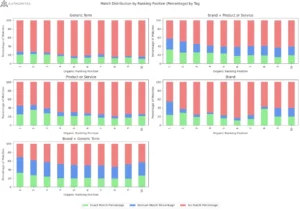A spokesperson from Google confirmed to Search Engine Land that the update is simply a “definition update” – meaning it won’t affect performance metrics in practice. Let’s delve into why it’s important for us to be aware of this and its implications. Google’s update concerns changes in the placements of paid ads in search results and their definitions. These changes are already noticeable and are affecting how campaign performance is analyzed and optimized.
Google Adjusts Top-of-Page Ads – What You Need to Know?
Top Ads are ads displayed above organic search results. Now, Google is expanding the definition of these ads to include those appearing below organic results as well. According to the updated definition, ad placement is dynamic and changes based on user search queries. The new update has caused some confusion among users. In response to inquiries, a representative from Google’s advertising team clarified that the new change is a definition update and not a change in how ad impressions are measured. According to the clarification, most ads will still appear at the top of the page above organic content, but some may also appear below it.
It’s worth noting that this change is part of an ongoing trend, and Google intends to continue examining how ads are presented in search results in the future.
How Will the Change Affect Advertisers?
The new definitions are expected to impact ad exposure metrics and their prominence. Ad placement is determined by an ad rank formula based on various factors. Even if the formula itself doesn’t change, it will still be affected by these updates. Therefore, it’s advisable to examine the click-through rate (CTR). The changes will allow advertisers to make informed decisions but may complicate performance comparisons between campaigns over time due to changes in metrics.
In summary, Google continues to explore new ways to display ads. The recent changes in search ad definition settings present new challenges but also provide new avenues for improving campaign performance. It’s important to stay updated on these changes, adjust performance analysis strategies accordingly, and make changes as needed.
Source: AskPavel







